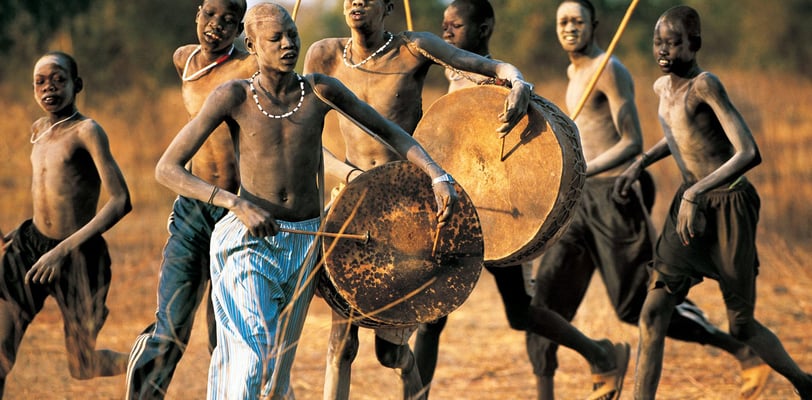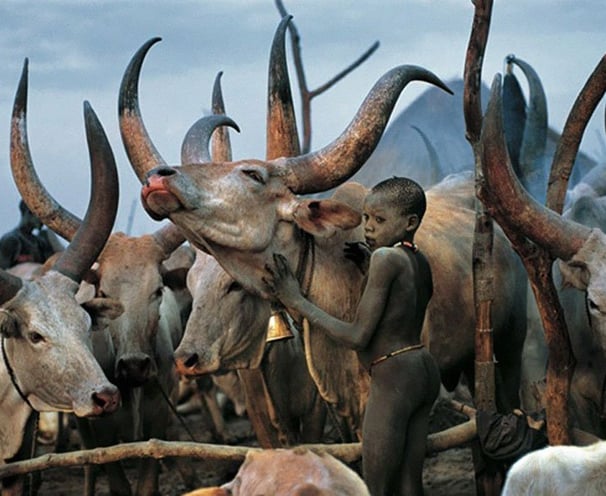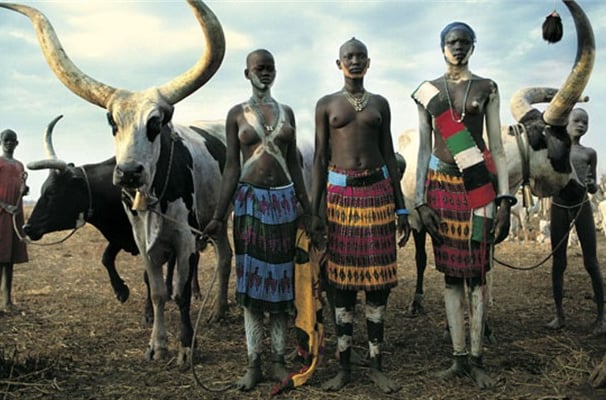The Dinka Tribe of South Sudan
A Rich Tapestry of Culture and Traditions
SOUTH SUDAN CULTURE


South Sudan, the world's newest nation, is home to a mosaic of diverse ethnic groups, each with its own unique customs and traditions. Among these, the Dinka tribe stands out as one of the largest and most prominent. The Dinka people, known for their rich cultural heritage and resilience, play a significant role in the history and identity of South Sudan. In this blog, we'll explore the fascinating world of the Dinka tribe, from their traditional way of life to their cultural practices and beliefs.
Geography and Demographics
The Dinka tribe primarily inhabits the vast region of Bahr el Ghazal in South Sudan, along the banks of the Nile River. This region is characterised by flat plains and swamps, making it ideal for cattle herding, which is a central part of Dinka life. The Dinka people are known for their strong sense of community and are organised into several clans and sub-clans, each with its own distinct customs and traditions.
Cattle and the Dinka Way of Life: Cattle play an indispensable role in Dinka culture. These animals are not merely a source of livelihood but are deeply intertwined with the Dinka identity. The Dinka are skilled cattle herders and measure their wealth and social status by the size of their cattle herds. Cattle are used for milk, meat, and as a form of currency in marriage negotiations and other social transactions. In Dinka society, the bond between a person and their cattle is sacred, and the loss of cattle is considered a significant tragedy.
Rite of Passage: The Cattle Camp: The Dinka people have a unique rite of passage known as the "cattle camp." Young Dinka boys, typically around the age of 7, leave their families to live in these camps, where they learn the skills and responsibilities of cattle herding. This period is essential in the transition from childhood to adulthood and helps build a sense of identity and responsibility within the community.
Cultural Beliefs and Spirituality: The Dinka people have a rich spiritual belief system, often centered around a supreme god called Nhialic. They believe that Nhialic communicates with them through intermediaries, such as ancestors and spirits. Rain is of utmost importance to the Dinka, as it ensures the well-being of their cattle and crops. They perform rain dances and rituals to appease the spirits and request bountiful rains.
Scarification and Body Art: The Dinka are known for their distinctive body art, characterized by intricate scar patterns. Scarification is both a rite of passage and a form of beautification. Scars are created by making small incisions in the skin, which are then rubbed with ash or other substances to create raised patterns. These scars not only signify one's passage into adulthood but also demonstrate one's bravery and resilience.
Challenges and Resilience: The Dinka people have faced numerous challenges, including civil unrest and displacement due to conflicts in South Sudan. They have displayed remarkable resilience, often maintaining their traditional way of life and cultural practices in the face of adversity. However, modernization, access to education, and exposure to external influences are changing some aspects of Dinka culture.
Conclusion: The Dinka tribe of South Sudan offers a glimpse into a world where tradition and culture are intricately woven into the fabric of daily life. Their unique way of life, centered around cattle herding and spiritual beliefs, is a testament to their enduring spirit and strong sense of community. As South Sudan continues to evolve, the Dinka tribe's cultural heritage remains an essential part of the nation's identity and history. Preserving and understanding the traditions of the Dinka people is vital for appreciating the diversity and resilience of South Sudan's rich tapestry of cultures.




